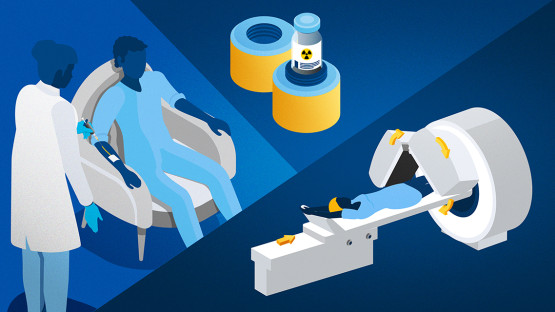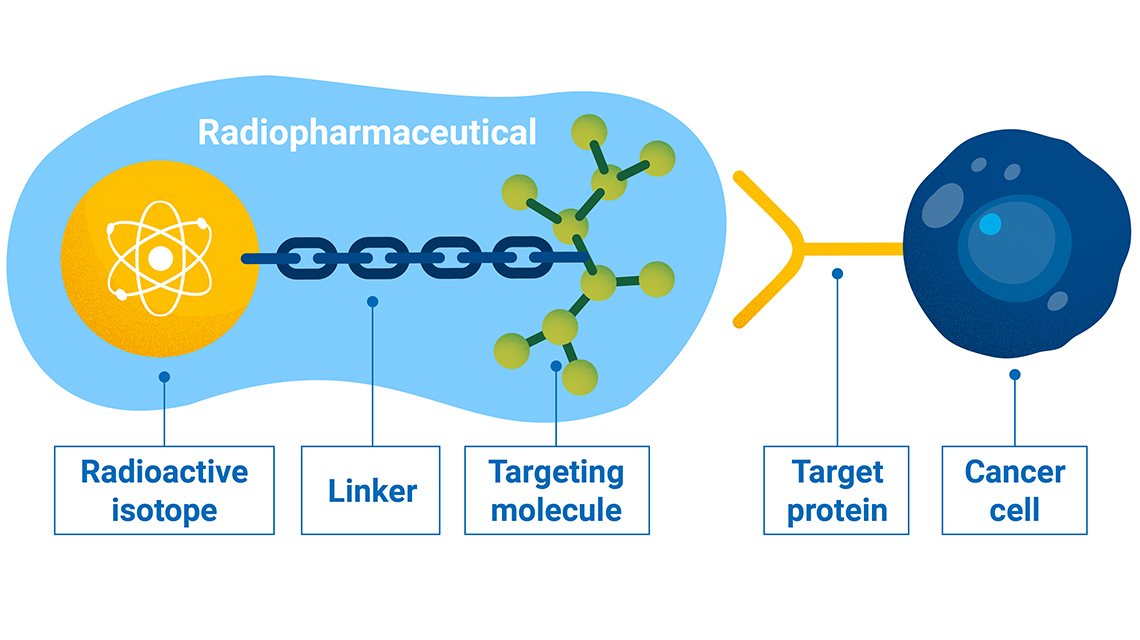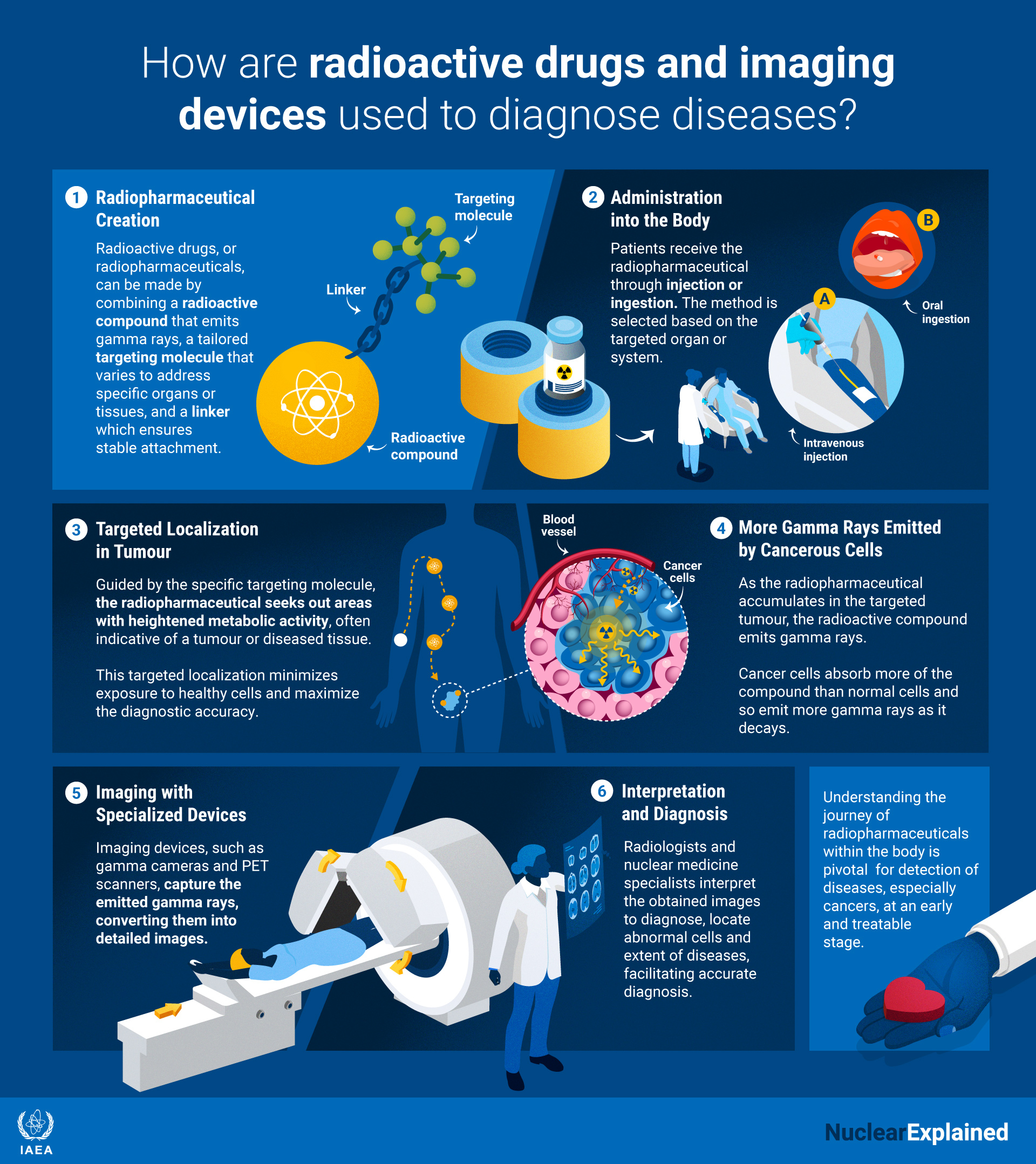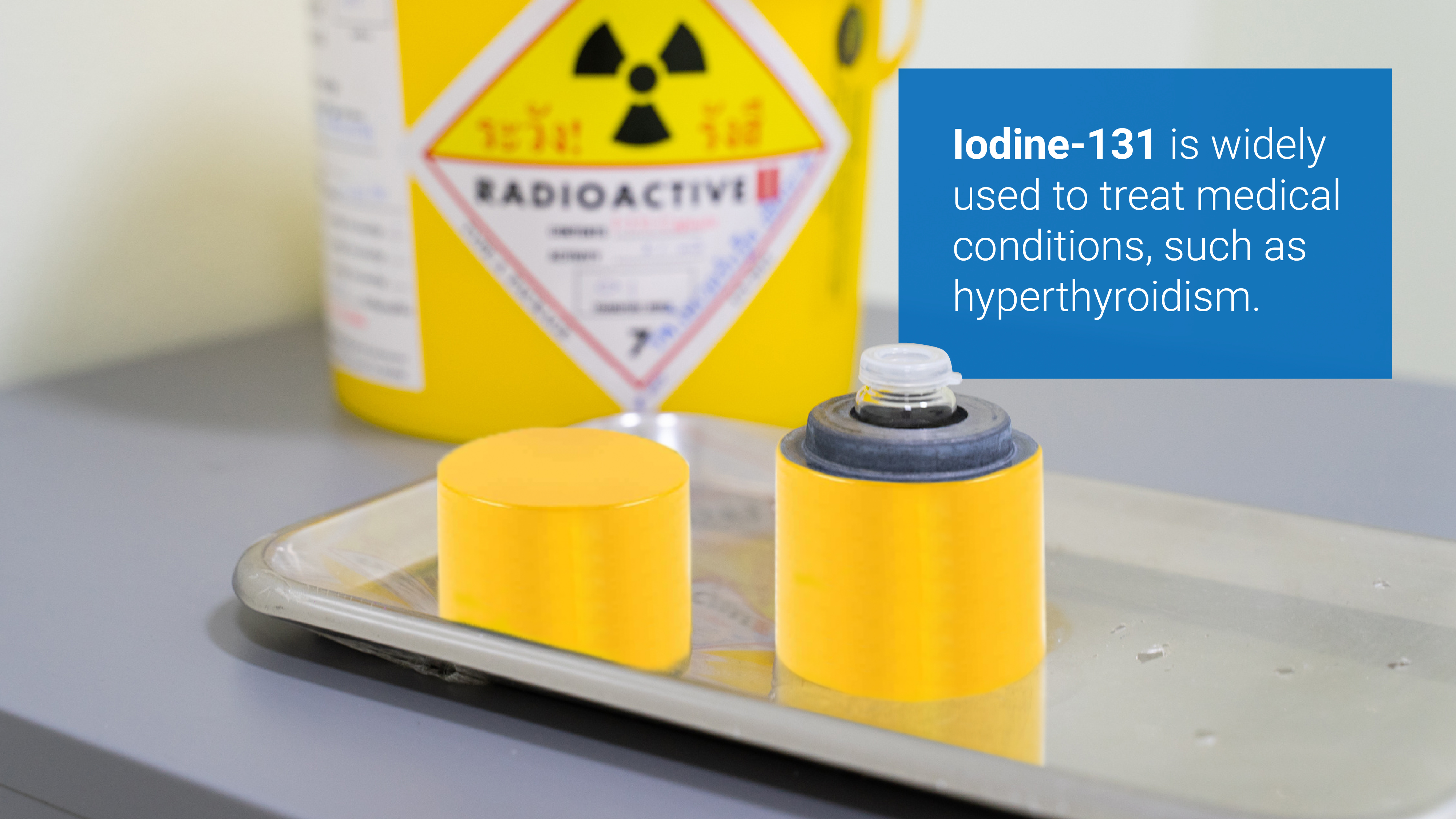

×
If you would like to learn more about the IAEA’s work, sign up for our weekly updates containing our most important news, multimedia and more.
Nuclear Explained 02 Feb 2024 Andrea Galindo , IAEA Office of Public Information and Communication
Radiopharmaceuticals are used in nuclear medicine worldwide. (Image: A. Vargas/IAEA)
Radiopharmaceuticals are drugs that contain, among other ingredients, radioactive forms of chemical elements called radioisotopes. Depending on the type of radiation that those radioisotopes produce, they can be used to diagnose or treat several medical conditions. Their applications range from imaging of many different organs, such as brain, heart, kidney and bone, to the treatment of cancer and hyperthyroidism.
Technetium-99m is the most widely used radioisotope in diagnostic nuclear medicine. Over 10,000 hospitals worldwide use it to detect cancer, cardiovascular and other chronic diseases, so that they can be treated.
Radiopharmaceuticals are given to patients by injection, or by mouth, and can be monitored and analysed with external medical devices and tests. Specialized safety protocols are in place in most countries to protect patients and health professionals from any side-effects of these drugs.
In addition to containing radioactive atoms, radiopharmaceuticals contain molecules that are designed to travel inside the body of the patient until they reach their target tissue or organ. For instance, certain radiopharmaceuticals are “sugar-like” – their radioactive atoms are part of a substance that is very similar to sugar, a glucose analogue. Since tumours consume more glucose than other parts of the body, the sugar-similar drug travels inside the body of the patient and gets absorbed to a high degree by the tumour cells that will “eat the sugar” and thereby make the tumour visible.


Unlike X ray examinations that can be performed at “any time”, examinations with radiopharmaceuticals often require a waiting period from when the drug is administered until it has reached the target tissue. A diagnostic radiopharmaceutical emits radiation called “(gamma) photons”. Like X rays, this special form of light can penetrate the body and detected by an external “camera” that will produce a “picture” which can be used to, for instance, see a tumour or assess the functioning of the lungs.
Radiopharmaceuticals are a key component of nuclear medicine, and are crucial to fighting cancer and several other medical conditions. Their use, however, requires extensive personnel training on patient safety and equipment handling. The IAEA has supported the establishment of a new PET Centre in Skopje, through technical advice, training of professional staff and the donation of equipment.
Following the administration of a radiopharmaceutical to a patient, health professionals typically use one of the following devices for medical imaging purposes:

Therapeutic radiopharmaceuticals contain, among other ingredients, radioactive atoms that release high-energy types of radiation -such as alpha or beta particles with short range in tissue - which destroy or weaken unwanted cells or tissues, such as tumours or overactive thyroid cells.
Diagnostic and treatment processes share similarities, however treatment with radiopharmaceuticals focuses on delivering targeted radiation to specific cells, omitting the imaging step central to diagnostic use.
While the radiopharmaceutical is designed to make it travel inside the body without harming healthy tissues, the patient may need to undergo additional tests to monitor potential side effects of this kind of therapy, which is normally considered safe and well-tolerated.